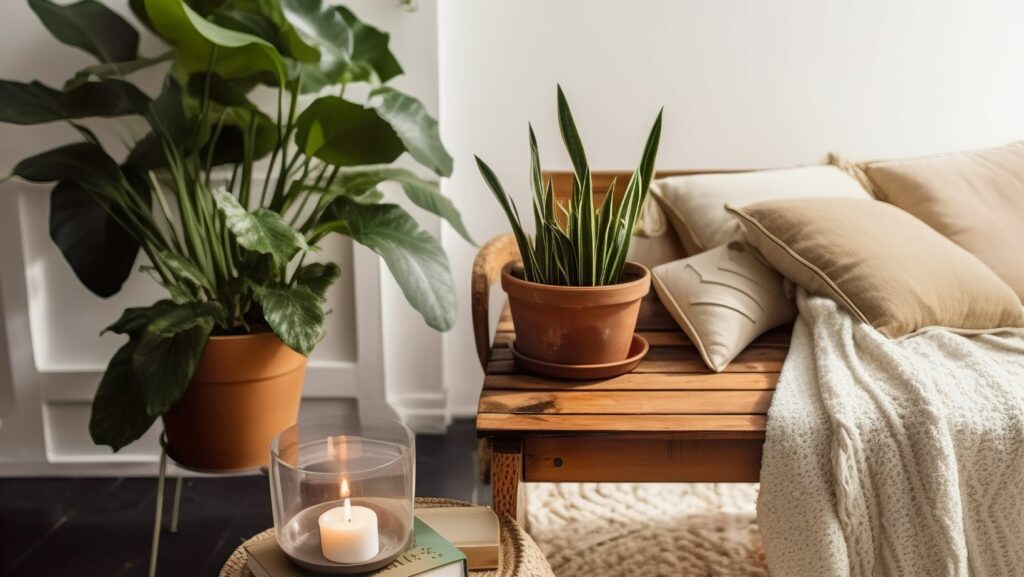Incorporating plants into living room decor isn’t just a trend; it’s a timeless approach to bring vitality and tranquility into one of the most used spaces in any home. As urban dwellings grow increasingly compact, the challenge of blending style and nature becomes paramount. Living room interiors that skillfully integrate plants can transform the aesthetic and atmosphere of the space, promoting not only visual appeal but also well-being and air quality.
Choosing the right plants and positioning them strategically within the living room can create an environment that feels both organic and designed. Whether it’s a towering fiddle leaf fig making a statement beside a modern sofa, or a series of small succulents gracing a minimalist shelf, each choice adds a layer of texture and life. This article explores various ways homeowners can enhance their living room spaces by seamlessly incorporating greenery, making them not only more stylish but also more invigorating.
Living Room Interior Design With Plants
Enhancing Aesthetics
 Integrating plants into your living room not only boosts its visual appeal, but also adds a sense of life and energy to the space. Selecting the right plants plays a critical role in enhancing the room’s aesthetics. For example, tall, leafy palms or dracaenas can introduce dramatic vertical lines and create a feeling of height in rooms with low ceilings. Conversely, sprawling ferns or hanging plants like pothos and spider plants add depth and interest to higher spaces, drawing the eye upward and filling out bare corners effectively. Strategic placement of plants can lead to a more organized and harmonious interior. Grouping different sizes and types of plants together can create a layered look that adds complexity and finesse to the living room.
Integrating plants into your living room not only boosts its visual appeal, but also adds a sense of life and energy to the space. Selecting the right plants plays a critical role in enhancing the room’s aesthetics. For example, tall, leafy palms or dracaenas can introduce dramatic vertical lines and create a feeling of height in rooms with low ceilings. Conversely, sprawling ferns or hanging plants like pothos and spider plants add depth and interest to higher spaces, drawing the eye upward and filling out bare corners effectively. Strategic placement of plants can lead to a more organized and harmonious interior. Grouping different sizes and types of plants together can create a layered look that adds complexity and finesse to the living room.
Improving Air Quality
Plants contribute significantly to improving air quality in living room environments. They naturally filter out common pollutants and toxins in the air, releasing oxygen through the process of photosynthesis. Plants such as peace lilies, snake plants, and areca palms are renowned for their superior air-purifying properties. Positioning these plants in areas where air flow is optimal, such as near windows or in the path of air circulation from HVAC systems, enhances their efficacy in purifying the air. This practice not only promotes a healthier living environment but also contributes to the overall well-being of residents, ensuring that the living room remains a fresh and revitalizing space.
Choosing the Right Plants for Your Living Room
Factors to Consider
 Selecting the perfect plants for your living room involves more than just aesthetics; it requires understanding the specific needs of the plant and the environment of your space. Light exposure ranks as the primary consideration. Living rooms with large windows might support fiddle leaf figs or bird of paradise, which thrive under bright indirect light. Conversely, spaces with low light are more suitable for philodendrons or ZZ plants, which flourish in subdued lighting conditions.
Selecting the perfect plants for your living room involves more than just aesthetics; it requires understanding the specific needs of the plant and the environment of your space. Light exposure ranks as the primary consideration. Living rooms with large windows might support fiddle leaf figs or bird of paradise, which thrive under bright indirect light. Conversely, spaces with low light are more suitable for philodendrons or ZZ plants, which flourish in subdued lighting conditions.
Humidity and temperature also play vital roles in plant health. Tropical plants, such as orchids and monstera, demand high humidity and might need regular misting if your living room’s air is dry, especially in colder months. Succulents and cacti, on the other hand, prefer dry air and minimal watering, making them suitable for environments with central heating.
Lastly, assess the available space and growth habits of potential plants. Tall plants like the rubber tree may serve as striking focal points if floor space permits. In contrast, smaller plants like succulents or air plants might be better on shelves or in hanging baskets if space is compact.
Top Plants for Living Room Spaces
 For those looking to introduce greenery into their living rooms, certain plants not only beautify the space but also are well-suited to typical living room conditions. The spider plant, known for its resilience and minimal care requirements, adapts well to various light levels and can be hung in baskets or placed on pedestals to create dynamic levels of greenery.
For those looking to introduce greenery into their living rooms, certain plants not only beautify the space but also are well-suited to typical living room conditions. The spider plant, known for its resilience and minimal care requirements, adapts well to various light levels and can be hung in baskets or placed on pedestals to create dynamic levels of greenery.
Snake plants, recognized for their structural form and air-purifying abilities, can tolerate low light and infrequent watering, making them an ideal choice for frequently used spaces like living rooms. Their upright growth habit makes them excellent for corners or alongside furniture.
For a touch of elegance and purification, peace lilies make an excellent choice. Requiring minimal light and offering white blooms, they also rank high in removing airborne toxins.
When introducing plants into a living room, variation in size, shape, and color can lead to a more vibrant and inviting atmosphere. Pairing larger floor plants with smaller, decorative ones on tables or shelves creates layers and textures that add depth and interest to the room’s overall design.

